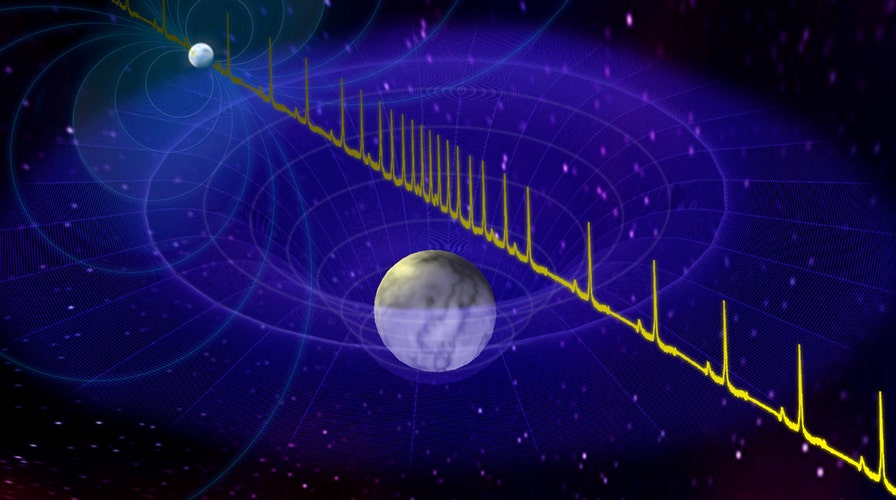Fox News Flash top headlines for Sept. 16
Fox News Flash top headlines for Sept. 16 are here. Check out what's clicking on Foxnews.com
Twice the mass of the Sun. Nearly 700,000 times heavier than Earth. A team of researchers has discovered the "most massive neutron star ever measured," one that is considered "almost too massive to exist."
The star, known as J0740+6620, is approximately 4,600 light-years from Earth and is only 5 miles across, a measurement that "approaches the limits of how massive and compact a single object can become without crushing itself down into a black hole."
"Neutron stars are as mysterious as they are fascinating," said Thankful Cromartie, a graduate student at the University of Virginia, in a statement. "These city-sized objects are essentially ginormous atomic nuclei. They are so massive that their interiors take on weird properties. Finding the maximum mass that physics and nature will allow can teach us a great deal about this otherwise inaccessible realm in astrophysics."

Artist impression of the pulse from a massive neutron star being delayed by the passage of a white dwarf star between the neutron star and Earth. This phenomenon is known as "Shapiro Delay." In essence, gravity from the white dwarf star slightly warps the space surrounding it, in accordance with Einstein's general theory of relativity. (Credit: SWNS)
MYSTERIOUS, NEWLY DISCOVERED COMET IS PROBABLY AN INTERSTELLAR VISITOR, SCIENTISTS BELIEVE
Neutron stars are the compressed remains of a supernova and are created when giant stars collapse in explosions of almost unfathomable size. To put it in perspective, a single sugar cube on J0740+6620, which is 2.17 times the mass of the Sun, would weigh approximately 100 million tons, or roughly that of the world's entire human population, according to the statement.
One of the study's co-authors, Maura McLaughlin, said that neutron stars, which are almost as dense as black holes, are "very exotic."
"We don't know what they're made of and one really important question is, 'How massive can you make one of these stars?' It has implications for very exotic material that we simply can't create in a laboratory on Earth," McLaughlin said in a separate statement.

WVU's Maura McLaughlin and Duncan Lorimer use the Green Bank Observatory for research. Here, McLaughlin and Lorimer are standing on top the Green Bank Telescope, which they used to help detect the most massive neutron star ever. (CREDIT: Scott Lituchy/West Virginia University.)
UNIVERSE MIGHT BE 2 BILLION YEARS YOUNGER, SHOCKING STUDY SAYS
Neutron stars (also known as pulsars) are also exceptionally hostile environments, with extreme temperatures and fostering intense magnetic fields. They're also radioactive, which adds to the interest that researchers have in them.
"As the ticking pulsar passes behind its white dwarf companion, there is a subtle (on the order of 10 millionths of a second) delay in the arrival time of the signals," the statement reads, adding that this is known as the "Shapiro Delay."
The Shapiro Delay is the delay between the time the radio waves take to reach Earth and the time they pass in front of the pulsar, caused in part by the white dwarf star warping the space around it, as noted famously in Einstein's general theory of relativity.
Professor Scott Ransom, one of the study's co-authors, also noted that the orientation of the star system created "a fantastic cosmic laboratory."
"Neutron stars have this tipping point where their interior densities get so extreme that the force of gravity overwhelms even the ability of neutrons to resist further collapse," Ransom said in a statement."Each 'most massive' neutron star we find brings us closer to identifying that tipping point and helping us to understand the physics of matter at these mind-boggling densities."
The neutron star was initially identified by the Green Bank Telescope in West Virginia and the research has been published in the journal Nature Astronomy.





















